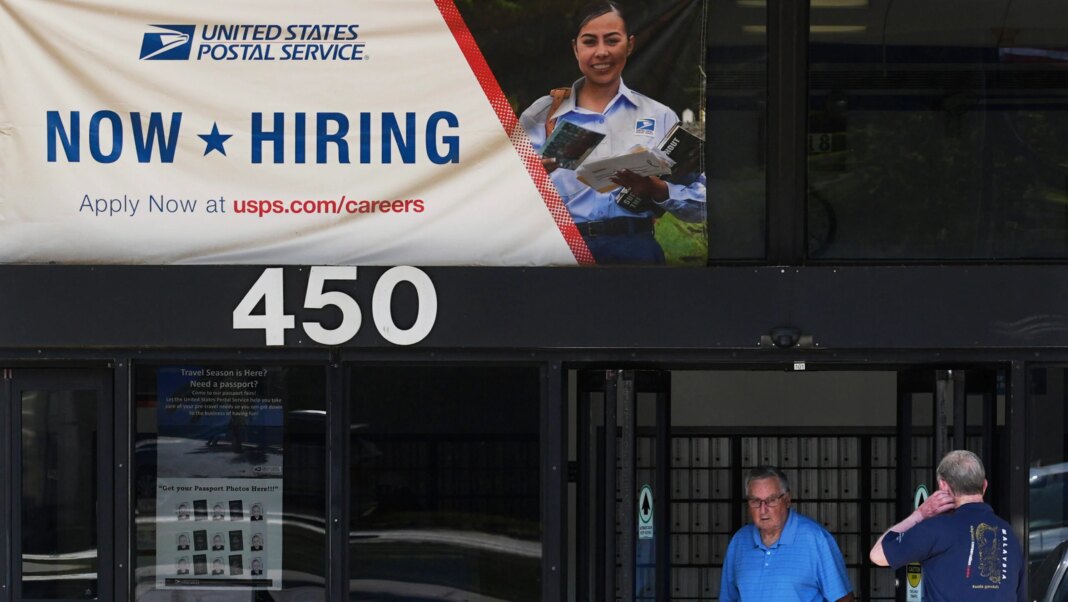The Monthly Jobs Report: A Crucial Economic Indicator
From Wall Street trading floors to the Federal Reserve to economists sipping coffee in their home offices, the first Friday morning of each month typically brings a hush around 8:30 a.m. Eastern time as all eyes turn to the Labor Department’s crucial monthly jobs report. This report serves as a key barometer for the health of the economy, providing insights into hiring trends, unemployment rates, and overall economic activity. However, a recent government shutdown has delayed this vital data, leaving businesses, policymakers, and investors in a state of uncertainty.
The Impact of the Government Shutdown
As the government remains shuttered, no information was released about hiring in September. This disruption marks the first delay since the 2013 government shutdown. During the 2018-2019 partial government closure, the Labor Department continued to operate, thanks to dedicated funding from Congress. The absence of September’s jobs figures is concerning, particularly during a period when clarity is essential for effective economic decision-making.
Uncertainty in Economic Data
The current political climate exacerbates the situation. Policymakers at the Federal Reserve and Wall Street investors desperately need accurate data to assess the economy. Hiring has seemingly come to a standstill, threatening to drag down broader economic growth. Meanwhile, consumers—especially those in higher income brackets—continue to spend, and some businesses are increasing investments in emerging technologies like artificial intelligence. However, whether these factors will sufficiently revive hiring remains a significant question mark.
Political Blame Games
In the midst of rising tensions, the Trump administration has pointed fingers at Senate Democrats, blaming them for the shutdown. Democrats, in turn, have accused the White House of mismanagement. White House spokesman Kush Desai stated, “Businesses, families, policymakers, markets, and even the Federal Reserve are flying blind at a key juncture in America’s economic resurgence because the Democrats’ government shutdown has halted the release of key economic data.”
This situation is further complicated by President Trump’s history of dismissing government jobs data when it’s unfavorable. For instance, he controversially fired the head of the Bureau of Labor Statistics after disappointing job reports in August. This creates skepticism about the reliability and transparency of economic data under the current administration.
Alternative Job Market Indicators
With the Labor Department’s website quiet, economists are turning to alternative measures of the job market provided by nonprofits and private-sector companies. These alternative insights indicate a job market with minimal hiring and few layoffs; those who are employed appear relatively secure, while job seekers face increasing challenges.
For example, the payroll processor ADP recently reported a surprising loss of 32,000 private-sector jobs last month. This decline was observed across various industries, including construction, manufacturing, and financial services. Conversely, only sectors such as health care, private education, and information technology saw job growth.
Hiring Trends and Economic Health
Nela Richardson, ADP’s chief economist, noted, “We’ve seen a significant decline in hiring momentum throughout the year.” The current economic climate reflects a low hiring, or even no-hiring, scenario where businesses are attempting to stabilize rather than expand.
Adding to the uncertainty, the weekly unemployment claims figures—which serve as a proxy for layoffs—are also unavailable during the shutdown. However, Goldman Sachs utilized data from most states to produce their estimates, suggesting that weekly claims rose slightly to 224,000, up from 218,000 the previous week. Historically low unemployment claims indicate that companies are still retaining the majority of their workforce.
Services Sector Activity
On Friday, the Institute for Supply Management shared its monthly services sector activity report, covering nearly 90% of the economy. This index decreased from 52 to 50, underscoring that economic activity remained stagnant last month. Notably, services companies cut back on hiring for the fourth consecutive month, indicating a trend of weakened job gains.
A Broader View of Unemployment
Additionally, the Federal Reserve Bank of Chicago recently released a monthly unemployment forecast—a new measure it unveiled last month. According to their estimates, the unemployment rate held steady at a relatively low 4.3% in September. While this figure suggests some stability, the lack of real-time data makes it challenging to assess the employment landscape accurately.
The Road Ahead
The current situation leaves many unanswered questions. As businesses and policymakers await the resolution of the government shutdown, the ripple effects of delayed economic data will be felt across various sectors. Without timely insights into job market dynamics, navigating the complexities of the current economy will be increasingly challenging for everyone involved.



